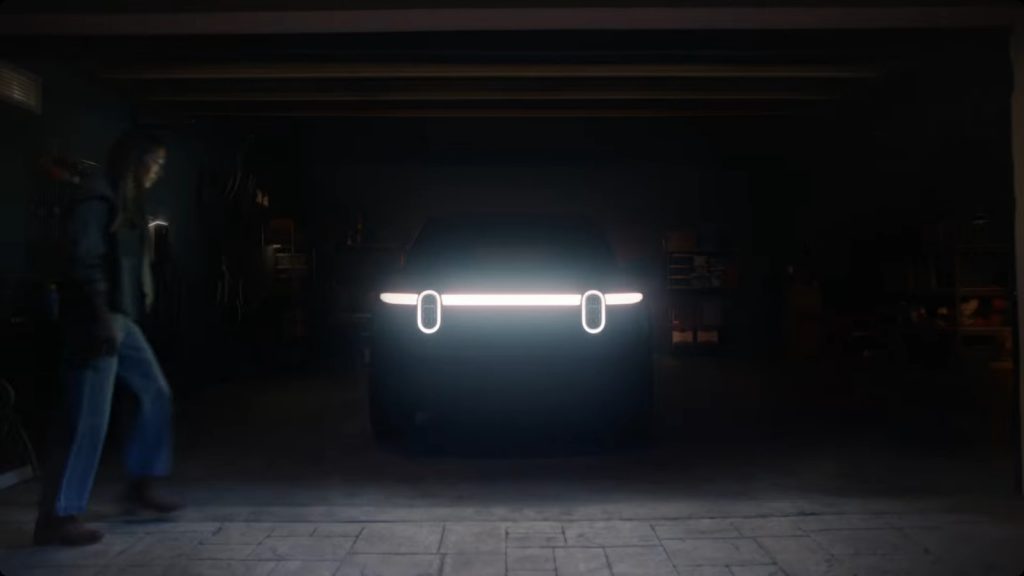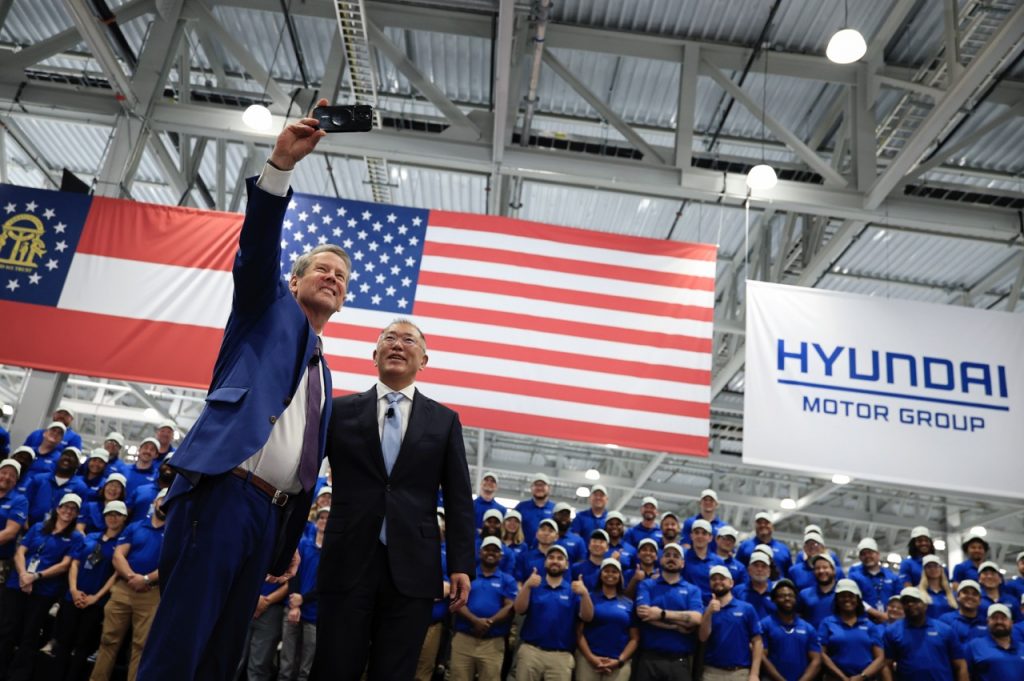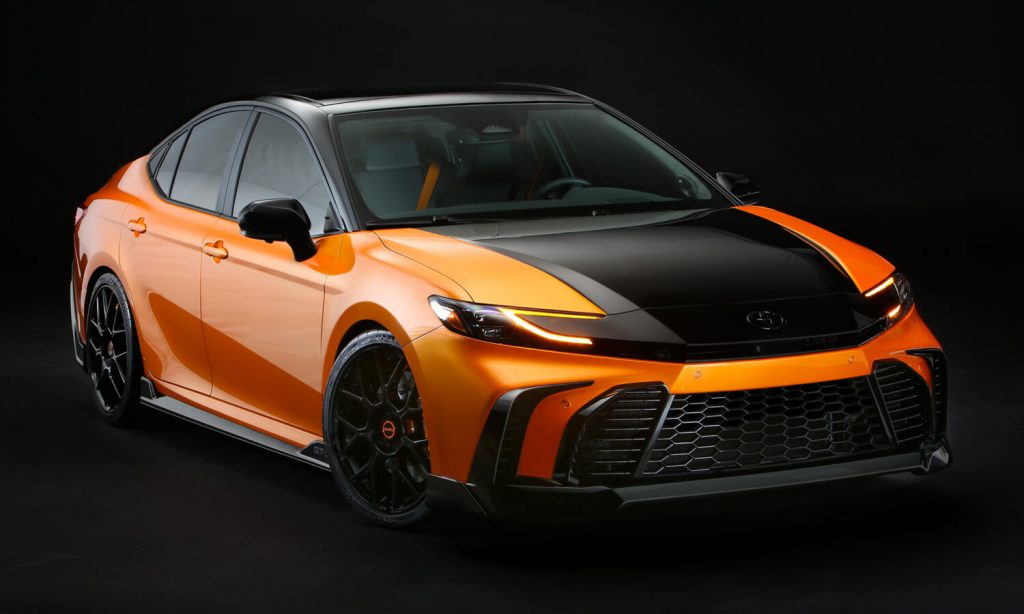I think a lot about fast followers, which are companies that aren’t necessarily first to a market, but come close enough and learn enough lessons to compete and/or sometimes dominate. (Apple wasn’t the first company to make a smartphone, nor was VHS the first tape-playing system). For a time, it seemed like Rivian could be that successful fast follower. Now it’s a lot less clear.
The fate of Rivian is important, if only because the company has one potentially good car coming soon and one possibly great car a little further down the track. Can the company overcome its loss of momentum to get there? That’s a big question in today’s Morning Dump.
It’s questions all around, today, actually. Can South Korea come to terms with a White House that wants a lot of cash now? Are Canada and the United States going to be able to make it work, or is the World Series suddenly something of more importance?
And, ending on a positive note, is Toyota’s SEMA concept the tamest SEMA concept ever?
Rivian Settles Lawsuit, Lays Off A Bunch Of People

There are so many advantages that Rivian had coming into the EV space. It had two attractive products that filled important niches in the market (large SUV and truck, plus a van). It was building those vehicles in America. The CEO comes off charming and not at all delusional. And, at the time, there was a huge amount of buzz around EVs, allowing the company to take in a lot of money in its IPO.
Now the company is hovering around 10% of its initial high share price, the buzz around EVs is dying, EV trucks are less popular, many incentives are going away at the federal level, and building cars in America now comes with a bunch of added materials costs thanks to tariffs.
Also, some of that IPO money is going back. Shareholders sued Rivian, claiming that the company knew it was going to raise the price of its R1 truck and SUV before it listed shares, which caused the value of those shares to drop once this was announced. While Rivian has not admitted any wrongdoing, Reuters reports that the company will pay $250 million to settle the case so it can focus on its big swing: Another two-row SUV called the Rivian R2.
People love their Rivians, generally, so perhaps a two-row SUV that costs about $45,000 and gets over 300 miles of range will appeal to a lot of people. It does feel like there are already a ton of those for sale now, although that price does make it cheaper than some potential gas-powered equivalents like the Audi Q5.
This launch is extremely important because, even with a cash injection from Volkswagen, the company continues to lose money on every vehicle it sells. Will its Q3 numbers show any improvement? Maybe.
In order to save money and “streamline,” the company announced it was laying off around 600 people, and forming “a single marketing organization” with CEO RJ Scaringe as the interim CMO, according to an email seen by Automotive News. Lowering costs is probably a good idea, though, until I drive it, I’m going to be a little skeptical that, in this market, a two-row SUV is going to move the needle enough to reverse the company’s fortunes.
You know what might? The dope as hell Rivian R3. This is a cool hatchback-type thing that’ll hopefully start in the upper-$30k range (though more for the hot version). Perhaps it’s overly optimistic to think a Hyundai Ioniq 5-sized vehicle will do any better than the Ioniq, but there is something indescribably alluring about it.
Does the R2 launch have to work for us to ever get an R3? Probably.
President Trump Demands Cash From South Korea, Which South Korea Is Not Wont To Do

One of these days, I’ll write my big piece on how the car market is way more influenced by the relative strength of different currencies than most normal people consider. A good example might be what’s happening with South Korea.
The country badly wants a deal with the United States so it can, among other things, sell cars with roughly the same tariffs as Japan. In order to get that, it pledged a lot of money in investment in the United States (a big chunk of which would be coming from Hyundai). The White House thanked Hyundai for its commitment by arresting a bunch of its citizens helping to build one of those investments.
Whereas Japan and the United States have a somewhat detailed outline of a trade deal, South Korea’s potential treaty depends on how much of that investment in America is in cash. And how fast that cash comes into the country.
This is tough for South Korea because, historically, the country’s exports helped make it money by building cars cheaply in the South Korean won and selling them in dollars, euros, and pounds. I won’t get into the complexity of the currency markets, but the won ain’t the dollar, and the country’s leaders fear that without having the ability to swap currencies freely with the United States, it’ll destabilize its own currency. Given that South Korea has faced currency issues before, this seems like a reasonable fear.
The South Korean plan has seemingly been to send over some cash, but mostly loans and guarantees. President Trump, though, seems to want that JG Wentworth speed.
Washington has pressured South Korea to accept conditions included in the agreement with Japan, such as the deadline for investments being Jan. 19, 2029, when Trump’s term ends, and allowing the U.S. government to select where the money goes. U.S. media also reported that Washington sought an increase in the investment amount.
“We are doing our utmost to persuade them that there are differences between Japan and South Korea, using various objective data and analyses,” Yeo told reporters last month.
South Korea’s foreign exchange reserves stood at about $422 billion as of the end of September, according to its central bank. The $350 billion that the U.S. is demanding is equivalent to 83% of that. Japan’s $550 billion investment promise is equivalent to approximately 40% of its foreign exchange reserves.
There are concerns that a short-term outflow of dollars could destabilize the country’s exchange rate.
The constant request for cash immediately on various fronts from the Trump Administration can be viewed in many ways. All presidents want stuff to happen in their own terms, which is why President Kennedy called for the United States to put a man on the moon before anyone knew how to do it. Perhaps it comes from a view that this long period of simmering inflation and cooling employment can’t last. Or maybe there’s some sort of massive remaking of the presidency that gives it unprecedented power to spend the money of private corporations.
Either way, destabilizing South Korea’s currency isn’t great if you want that country to also invest in the United States.
Trump V. Canada, Part Tres
President Trump was on Truth Social this morning and, in between ads for hearing aids and gold coins with the President’s face on them, was some angry messaging about the trade relationship between the United States and Canada.
What happened? The head of the Canadian Province of Ontario put out an ad campaign in the United States, just using a video of Ronald Reagan, pointing out that tariffs are bad.
If you want to read the full speech, btw, it’s here. I think this is the bit that’s upset the President:
You see, at first, when someone says, “Let’s impose tariffs on foreign imports,” it looks like they’re doing the patriotic thing by protecting American products and jobs. And sometimes for a short while it works — but only for a short time. What eventually occurs is: First, homegrown industries start relying on government protection in the form of high tariffs. They stop competing and stop making the innovative management and technological changes they need to succeed in world markets. And then, while all this is going on, something even worse occurs. High tariffs inevitably lead to retaliation by foreign countries and the triggering of fierce trade wars. The result is more and more tariffs, higher and higher trade barriers, and less and less competition. So, soon, because of the prices made artificially high by tariffs that subsidize inefficiency and poor management, people stop buying. Then the worst happens: Markets shrink and collapse; businesses and industries shut down; and millions of people lose their jobs.
The memory of all this occurring back in the thirties made me determined when I came to Washington to spare the American people the protectionist legislation that destroys prosperity. Now, it hasn’t always been easy. There are those in this Congress, just as there were back in the thirties, who want to go for the quick political advantage, who will risk America’s prosperity for the sake of a short-term appeal to some special interest group, who forget that more than 5 million American jobs are directly tied to the foreign export business and additional millions are tied to imports.
If there’s one thing that the President pays attention to, it’s television, and this ad has made him real mad. So mad that he’s stopped talks with Canada. According to NBC, this has happened before:
Trump’s termination of talks Thursday is not the first time he has cut off trade negotiations with Canada. In June, he said he was “terminating ALL discussions on trade with Canada,” citing the treatment of American tech companies and dairy farmers.
Canada quickly retaliated, slapping a quota on steel products, over what Finance Minister François-Philippe Champagne called “unjust U.S. tariffs.”
But days later, Canada announced it would rescind its digital services tax, which would have hit major U.S. companies, to appease Trump.
So, we’ll just have to wait and see what Canada can do to lower the temperature.
Toyota’s SEMA Camry GT-S Is Extremely Orange

Toyota is out with a SEMA Camry concept, and this version doesn’t come with a NASCAR-sourced V8 or wild powertrain. It doesn’t have 9,000 horsepower. It’s just a little lower, a little more agro, and a lot more orange.
As the company explains in a press release:
Unlike the over-the-top builds that often headline SEMA, the GT-S stays rooted in reality with its 232 horsepower, stock 2.5-liter four-cylinder hybrid system remaining unchanged. The interior, too, remains true to the production Camry, underscoring the build’s mission to highlight exterior design, stance, and chassis tuning as a natural extension of Camry’s existing capabilities.
[…]
“The Camry GT-S Concept is more than just a SEMA one-off—it’s a study in what a performance and style package could mean for Camry in the future,” said Adam Rabinowitz, chief designer, Toyota CALTY Design Research. “Our goal was to create something aspirational yet attainable, and to use this platform to gather valuable feedback from consumers.”
The team also focused on upgrades to complement the pronounced GT-S bodylines. At each corner, adjustable coilovers lower the chassis by 1.5 inches, yielding a more aggressive stance and improving handling. A high-performance brake upgrade includes massive 8-piston calipers squeezing 365mm front rotors with 6-piston calipers matched with 356mm rear rotors. To enhance mechanical grip, 20-inch performance wheels mounted with 245/35R20 tires fill the wheel wells.
You know what? I’m into it. This car could easily see the light of day, as Toyota hints approximately 400 times in its press release. I love a wild SEMA concept, too, don’t get me wrong, but production-intent stuff has its place.
What I’m Listening To While Writing TMD
Thanks to the reader who sent in this salsa tune, which, I think you’d agree, is the sonic version of the Toyota Camry above. It’s “Lección de Amor” by Adalberto Alvarez. Che romantica!
The Big Question
What’s your favorite SEMA concept?
Top photo: Rivian








Maybe if Rivian stop distracting with ev bikes and random shite, we may get to the good stuff
If VW had invested in Rivian instead of going down the Cariad I.D.-whatever nightmare, the headlines would probably be quite different for both companies right now. I’m guessing that the R3 would be coming out next quarter and Porsche would still be profitable